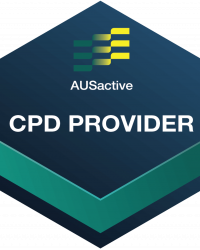Mat Repertoire
Spinal Mobility:
Seated Spine Twist
Alternate Names
Spine Twist Seated
Derived From
Classical Mat Work: The Spine Twist
Primary Element
Mobility
Why for Primary?
To help improve the mobility and flexibility of the spine in the transverse plane, or to improve rotation.
Secondary Element
Stability
Why for Secondary?
To develop abdominal stability to keep the pelvis stable throughout the exercise and to create support for the spine during the movement.
Tertiary Element
N/A
Why Tertiary?
N/A
Repetitions
Three to five each side
Plane of Motion
Transverse
Targeted Muscles
The abdominals including the internal and external obliques on the rotation of the ribcage and thoracic spine and the deeper layer of transversus abdominis to assist in pelvis stability.
The spinal extensors such as the erector spinae which include the longissimus, iliocostalis, and spinalis muscles.
Warnings
Not suitable for some spine or shoulder issues, where rotation is contraindicated or where the client is unable to work in a pain free range of motion.
Execution
Sit tall on the Mat from ischial tuberosities (sitting bones), with the legs extended and adducted with flexed feet. Arms lengthened out in a T position in line with the shoulders palms facing up.
Double exhale to rotate the torso from the waist up, moving the rib cage, and pulse, inhale to engage the abdominals and bring the torso through centre to the starting position before alternating sides.
Observations
Do a body scan of the client taking note of the following points
- Pelvis
- Can the client keep the pelvis and in neutral and still the entire time tucking the pelvis under and leaning back, or tilting the pelvis forward?
- Can the client keep the pelvis still and rotate from ribcage or thoracic?
- Legs
- Can the client keep the legs still throughout? Use the press down of the heels to assist.
- Allow the client to bend their knees, or sit on the end of the Mat rolled up or a yoga block to assist in keeping their pelvis neutral, particulary if they are biasing a posterior tilt or have tight hamstrings.
- Feet
- Are the feet flexed and pressing downwards into the floor?
Learning Style Technique Cues
Auditory – word associations that connect mind and body
- Actively rotate the rib cage, keeping the shoulders up and back
- Don’t worry about how far you’re turning around, focus on where the movement is coming from
- Say the client’s name when you’re about to interact with them
Visual
- Imagine the ribcage moving around with the shoulder girdle and head only moving within the same range as the ribcage
- You may demonstrate a part of the movement as a visual representation for the client to see
Kinaesthetic
- Adjust the leg position by bending the knees or proping up onto the Mat folded over or a yoga block in order to sit in a neautal pelvis posiiton
- Press the heels actively into the floor to assist with keeping the pelvis still
- Keep long and even through the torso, avoid colapsing the torso or leaning to one side as the shoulder and upper arm press the pedal downwards
Modifications and Variations
Regress the exercise by
- Reducing the repetitions and/or pace
- Sitting on a yoga block or the Mat rolled up to allow the legs to extend and find more range from the lumbar spine if the hamstrings and lumbar spine are tight
- Reducing the range of motion so the client can focus on pelvis stability, and rotation from thoracic or rib cage moving
- Working on Spinal Mobility: Seated Spine Stretch
- Working on Warm Down: Roll Down
- Working towards Wunda Chair Spinal Mobility: Seated Spine Stretch
Progress the exercise by
- Increasing the repetitions and/or pace
- Working towards Spinal Mobility: Saw
- Working towards Wunda Chair Spinal Mobility: Seated Spine Twist
Series and Transitions
This exercise is part of the Spinal Mobility series which also includes Seated Spine Stretch and Saw. These exercises can also be found in the Wunda Chair repertoire, and variations in the Cadillac repertoire.

